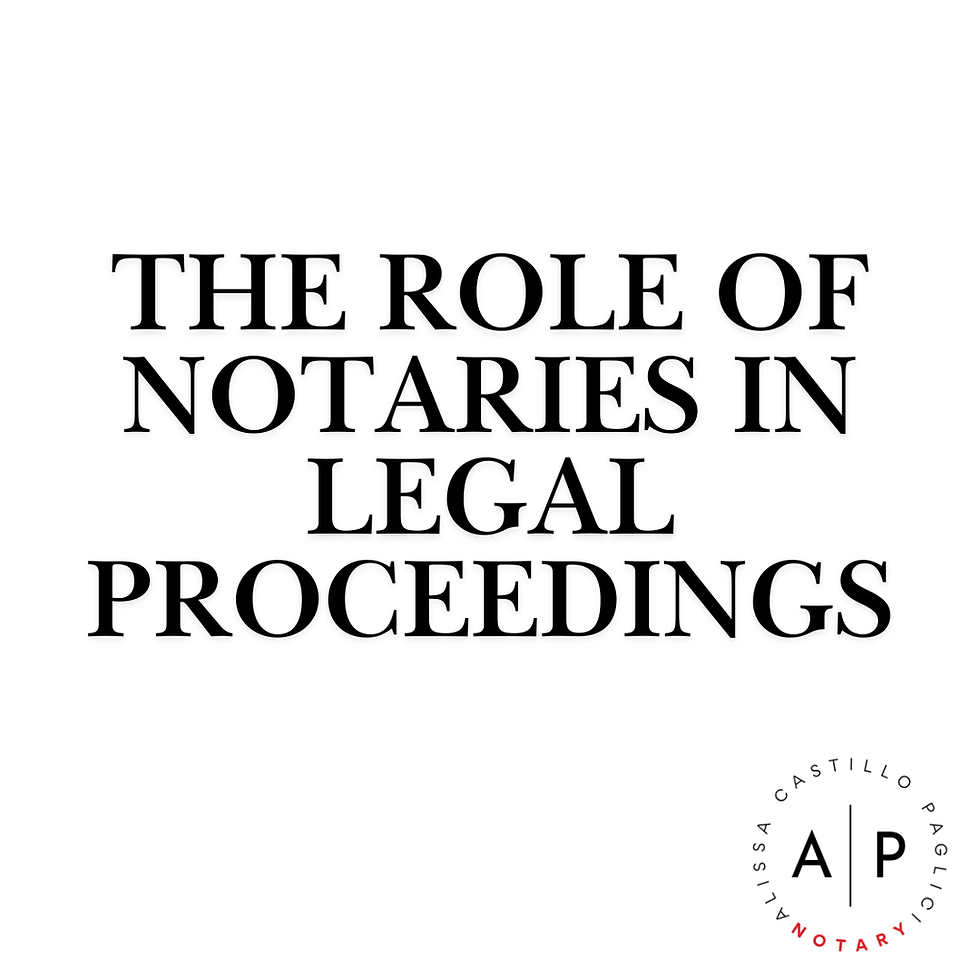The Process of Notarizing a Power of Attorney
- alissacpthenotary
- Jul 8
- 2 min read
Updated: Aug 2
A Power of Attorney (POA) is a powerful legal document that allows someone (the “agent” or “attorney-in-fact”) to make decisions on behalf of another person (the “principal”). Because of the authority it grants, most institutions require a POA to be notarized to be valid. Here’s a clear breakdown of how to properly notarize a Power of Attorney and why it matters.
Step 1: Complete the Document
Before meeting with a notary, the Power of Attorney should be fully filled out with no blank spaces. The document must clearly state the names of the principal and agent, the scope of authority, and the duration of the power being granted.
Step 2: Confirm Identity
The notary’s job starts with verifying the identity of the person signing the POA (usually the principal). This is done using a valid government-issued photo ID such as a driver's license or passport. The signer must also appear mentally competent and willing.
Step 3: Witnessing the Signature
The notary watches as the principal signs the POA. It’s important the signer does this voluntarily and understands what they are signing. If the signer appears confused or coerced, the notary must decline the notarization.
Step 4: Apply Notarial Certificate
Once the signature is verified, the notary fills out the appropriate notarial certificate—typically an acknowledgment. This confirms the principal appeared before the notary and affirmed the signature as their own.
Step 5: Notary Seal and Journal Entry
The notary applies their seal or stamp and records the notarization in their official notary journal, including the type of document, date, ID used, and any witnesses (if required by the state).
Why It’s Important
Notarizing a Power of Attorney helps:
Prevent fraud or abuse
Ensure institutions (like banks and hospitals) accept the document
Prove the signer was competent and aware of their actions
Strengthen legal enforceability in court or across state lines




Comments